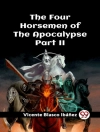In Florence L. Barclay’s poignant novel, 'Returned Empty, ’ the narrative intricately weaves themes of love, loss, and redemption against the backdrop of post-Victorian England. Written in a rich, lyrical style that echoes the emotional depth of the early 20th century romantic literature, Barclay crafts a story that explores the psychological and social intricacies faced by her characters as they navigate profound grief and yearning. The novel’s structure employs vivid imagery and melodramatic elements that draw the reader into a world where the consequences of past decisions linger palpably, illuminating the complexities of the human heart. Florence L. Barclay, an accomplished author and poet, was deeply influenced by her experiences in the early 1900s, a period rife with societal changes and shifting norms regarding gender and relationships. Her own life was overshadowed by personal tragedy, which enriched her understanding of love’s trials and triumphs. This intimate perspective informs the emotional authenticity of 'Returned Empty, ’ allowing readers to grasp the struggles of the characters in a heartfelt manner. Readers seeking a reflective exploration of love’s enduring power should immerse themselves in 'Returned Empty.’ Barclay’s masterful storytelling and profound insights into human emotions make this novel a compelling read for anyone intrigued by the complexities of the heart and the intricate dance between hope and despair.
O autorze
Florence Louisa Barclay (1862-1921) was an English romance novelist of considerable acclaim during the early 20th century. Her literary career began later in life, but she quickly gained popularity through her skillful storytelling and the emotionally charged narratives she employed in her works. Barclay’s most renowned novel, 'The Rosary, ’ published in 1909, was a best-seller and remained widely read for many years. It is often seen as her masterwork, celebrated for its intricate plot and insight into human relationships. Her narrative style is characterized by a blend of sentimentality and moral earnestness, resonating with the values of her Edwardian readership. Barclay’s other notable works include 'The Mistress of Shenstone’ (1910), 'The Broken Halo’ (1913), and 'The Following of the Star’ (1911). Her writings often explore themes of love, fate, and faith, subtly weaving Christian moral undertones into her romantic plots. Despite the episodic sentiment often associated with her genre, Barclay’s literary output was held in high regard by her contemporaries for its emotional depth and engaging characterizations. Largely forgotten over time, her books nonetheless remain a testament to the period’s tastes and the appeal of romantic fiction in the early 20th century.












